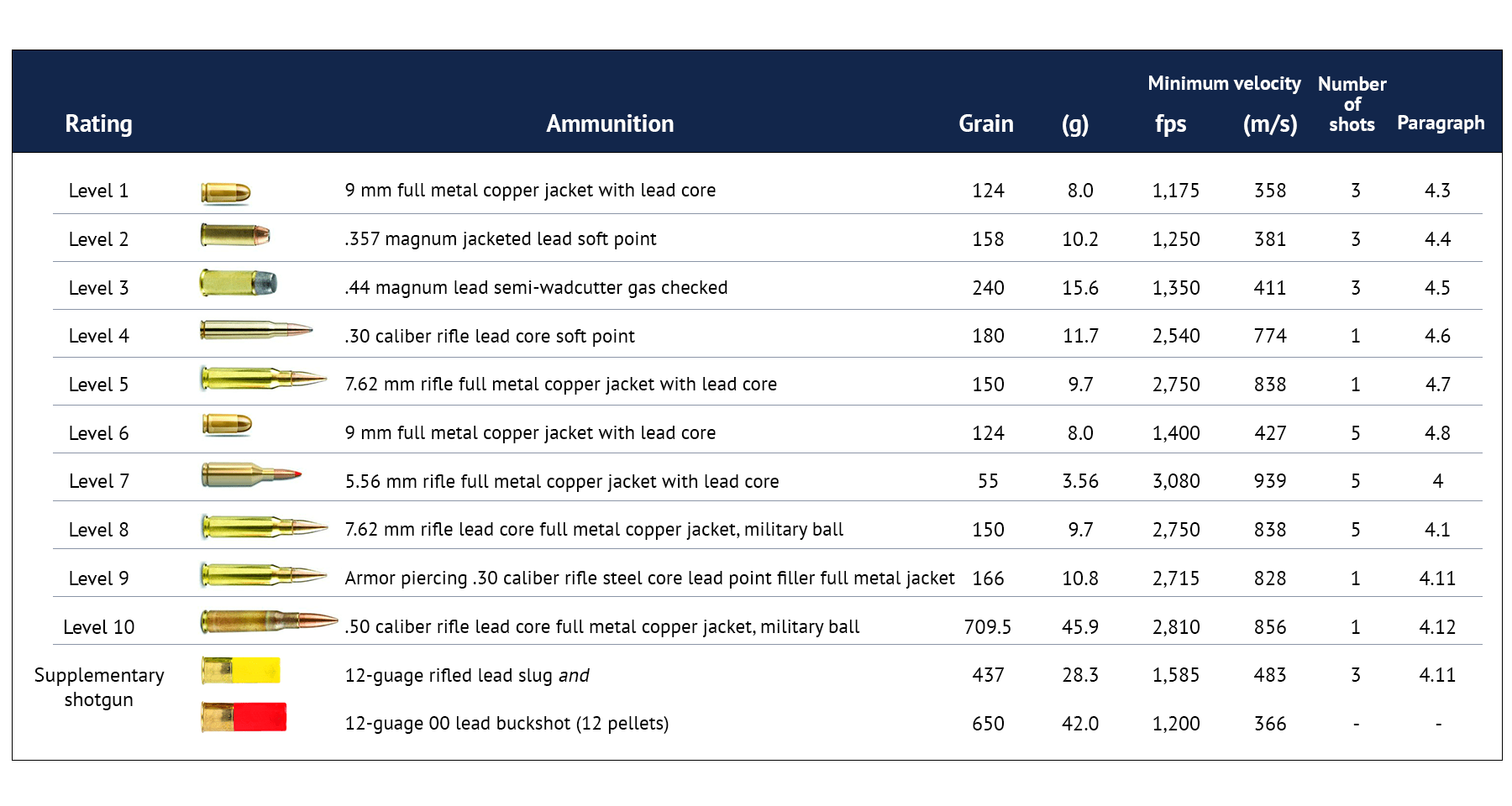Bullet Resistant Doors
Bullet resistant doors are often used in government buildings, cashier stands, high crime areas, or any structure where increased safety is desired. They are generally tested in accordance with UL 752 and assigned a level from 1-10 that defines how resistant the door is to gunfire. See chart below.
A security consultant should analyze the building conditions to determine the appropriate bullet resistance level required.
UL 752 – Standard for Bullet-Resisting Equipment

NOTE: UL 752 – Standard for Bullet-Resisting Equipment is available for purchase here.
Bullet Resistant Door Specifications
The doors may be flush or have full glass vision lights. They are also available in pairs, fire-rated, STC rated and blast resistant.
The standard that should be specified is often spelled out by whomever is commissioning the project. UL 752 is the most common test method. NIJ 0108.01 is one of the primary specifications used by the government and NCEL-MIL-SAMIT is generally used for military projects.
Bullet resistant doors are available with a variety of cores, such as steel stiffened, honeycomb, and polystyrene. It is only necessary to specify to a performance level and not to a specific core material. Many of the cores are proprietary at the higher levels.
Resources
SDI has developed a variety of resources for architects, specifiers and distributors regarding bullet resistant doors below.
AIA / GBCI Education
Specifying Specialty Steel Doors: A Primer on Fire-Rated, Forced Entry, Acoustic, Stainless Steel and More
Article
Bullet Resistant Assemblies
Article
Doors & Hardware Magazine: Specifying Specialty Steel Doors
Article
Why School Architects are Switching to Steel Doors
FAQ
Bullet resistant FAQ from architects and specifiers
Video
Specifying Bullet Resistant Steel Doors
Manufacturers
The manufacturers below offer bullet resistant doors that are built to SDI standards. Click their logos for more information.









